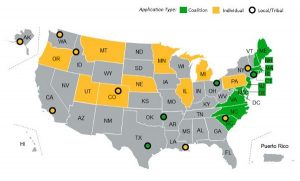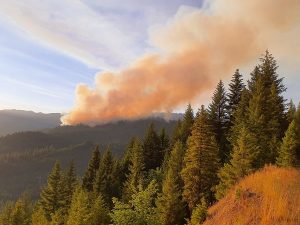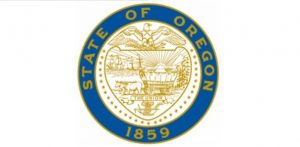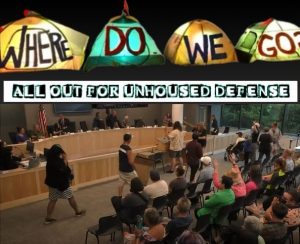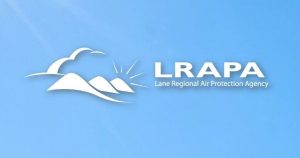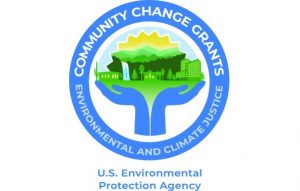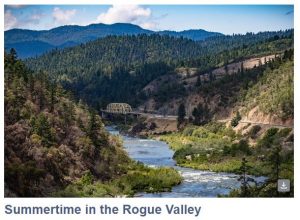Ready NW, Councilor Groves look to mitigate ‘the largest oil spill in US history’
6 min read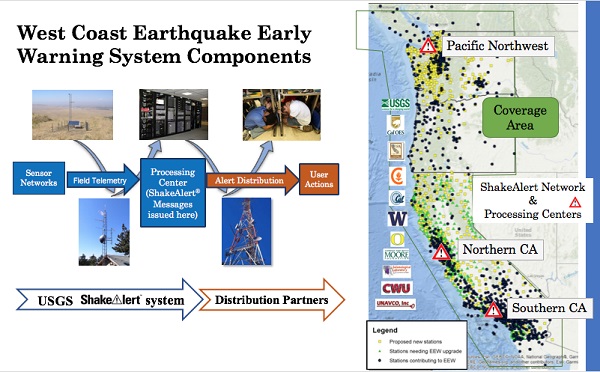
A state advisory committee considers potential fuel spills after the big earthquake. DEQ’s rules will affect storage tanks in northwest Eugene. During public comment Dec. 16:
[00:00:12] Jay Wilson: My name is Jay Wilson. I’m a local emergency manager and the former chair of the Oregon Seismic Commission. Just a point I’d like to raise is that although it’s out of the scope as was explained earlier, there is a relationship between the intention to mitigate the seismic risk of these facilities and the capacity to respond to an earthquake-induced spill that, as the reports have said, could be the largest oil spill we’ve had in U.S. history.
[00:00:40] Last week I attended a public summit for the Northwest Regional Response Team where I did have some communications with Don Pettit in DEQ and I asked him pretty point blank, does the Lower Columbia Geographical Planning Scenario directly account for the CEI (Critical Energy Infrastructure) hub having an earthquake-induced spill?
[00:00:59] And he said: No. He said the planning scenarios that they work with for the regional response teams is really just about staging for any type of spill, but it’s usually the more common anticipated ‘annual-likelihood’ spills.
[00:01:14] And so I guess what I would ask is: Is there a way that this group can at least acknowledge—you don’t have to plan for, you don’t have to take responsibility for spill contingency planning— but acknowledge that currently there is no contingency plan adequate for the scale of the spill that we’re working to avert through these mitigation measures.
[00:01:34] I think that would be a responsible and reasonable thing for the work that you’re doing to account for that in the decades we’re going to be trying to mitigate this risk. We don’t have contingency to meet the need if we have an earthquake induced spill. Thank you.
[00:01:51] Mike Kortenhof (DEQ): I think the last commenter, Jay Wilson, made an excellent point about response resources and the capability to manage a 9.0 earthquake.
[00:01:58] I think in the grander context, though, we can’t lose sight of the fact that a 9.0 earthquake is not just going to be an oil spill scenario. Very likely it’ll be the worst natural disaster to ever hit the United States in recorded history. So we have to consider that there’s going to be so many other issues that are going to be competing for emergency response resources, and those emergency response resources may be limited. And their abilities also, by the effects of the earthquake.
[00:02:24] This is a very important component, the facilities and the energy hub and hardening these assets. But it’s just one element of a much larger picture of what’s going to happen if we do experience that 9.0 earthquake. So I just want to make sure we keep in mind some of the larger picture here.
[00:02:42] Dale Feik: I’m Dale Feik, chair of the Washington County Citizen Action Network, working project director of Hillsboro Air and Water.
[00:02:47] In terms of confidential information, when you do state reports on the public right to know and you get the chemicals listed that the companies have to submit to the state fire marshals so that they can adequately respond, they don’t list it as confidential. They list it as proprietary. So they have proprietary chemicals. They still have to be listed, but they don’t have to say the name. So you may want to consider that as a definition term.
[00:03:12] At the Federal Reading Room in Seattle, I did an analysis of the worst-case scenarios of offsite consequences for the Intel plant in New Mexico, Oregon, in Arizona. But I also did one for petroleum in the Seattle area, ‘cause I wanted to know what that worst-case scenario was.
[00:03:31] So if you haven’t done so, I’d really encourage somebody to get involved in the Federal Reading Room and take a look and see what the companies have done to say what they’re going to do if there’s a worst-case scenario if they have if some of their very corrosive, toxic, dangerous chemicals get out.
[00:03:48] John Q: Offering public comment at the Fuel Tank Seismic Stability Advisory Committee:
[00:03:53] Kelly Missett: Hi, thank you. My name is Kelly Missett and I am the state’s coordinator for the ShakeAlert Earthquake Early Warning System. I work at the U of O and it seems like there are some questions about what ShakeAlert was. So I wanted to take this opportunity to clarify that ShakeAlert can detect earthquake so quickly that alerts can be delivered to people before they feel shaking.
[00:04:13] And during a Cascadia event, this could be up to several tens of seconds of warning. It does deliver free cell phone alerts to the general public, as Nancy mentioned, but industrial facilities and other community lifelines can also directly integrate these alerts into their internal communication systems, such as radio systems, for example.
[00:04:33] I think this is really valuable because in industrial operations, often employees are not looking at their phones. And by giving employees time to protect themselves, ShakeAlert could save lives and reduce injuries. During the Cascadia event, ShakeAlert can also be integrated into control systems to trigger other pre-programmed actions that could help reduce damage to infrastructure, as well as mitigate some cascading impacts. Thank you very much.
[00:04:56] Lauren Wirtis (DEQ): And Daniel (S.), over to you.
[00:05:00] Daniel: Thank you. I really appreciate that conversation today. Learned a lot. First I want to echo what Sterling Stokes said during the meeting about more of a definition and focus on how equity will play into these rules, and hopefully more discussion in the February meeting about the racial equity analysis.
[00:05:19] Second, I wanted to echo what many folks have said, which is the importance of assessing all the infrastructure relevant to potential spill during large earthquake that would include the dykes that protect facilities. Dykes required for spill containment, the spill containment firms themselves, adjacent facilities, and how they may overlap. in a disaster. And then interconnected facilities such as the piping that runs along Front Avenue, connecting Zenith (Energy), Chevron at the docks, and then the docks themselves, which are sometimes used by multiple companies.
[00:05:52] Lastly, I just really want to stress what some other folks raised regarding PSU’s work and the importance of incorporating downstream spill impacts in the environmental justice analysis. The Columbia River Estuary is a linchpin for salmon recovery and and survival. And so any major impact on that huge systems, the Columbia River Estuary will have massive impacts, regionwide. Looking at three to five miles around sites is super important, but taking a bigger view also has tremendous environmental justice impacts.
[00:06:25] Kevin Wells: I’m Kevin Wells, City of Portland. I’m one of the geotechnical engineers here at the city. A lot of this will come down to the evaluation (by) the geotechnical engineer and the estimated ground deformation that are contained within the liquefaction lateral spread evaluation.
[00:06:41] So I presume that in some cases, or maybe many cases, the practitioner may utilize either sophisticated modeling methods or computer modeling or state-of-the-art methods that could be beyond the expertise of a general practitioner in geotechnical engineering, and more importantly, beyond the expertise of a potential review body.
[00:07:05] So in those cases, does this team envision a peer review to ensure that we have consistency with the implementation of those types of models? Say, using a Flack analysis to do pore pressure generation or some other methodology, basically a peer review to check those results.
[00:07:24] John Q: From the River Road Community Organization and Ready NW, Advisory Committee Member Jackie Wurster.
[00:07:30] Jacque Wurster (Ready NW): I think it was brought up under the seismic vulnerability assessment of what would be the penalties or the consequences of not meeting the timeline or the requirements for submitting that assessment. And if I’m understanding that the mitigation plan is separate from that assessment, I think that question would also apply here: What would the penalties and consequences be for the mitigation plans not being met? Once you establish the timeline and the requirements there.
[00:07:57] John Q: Randy Groves also serves on the seismic stability advisory committee, racing to limit the damage from a 9.0 earthquake.
